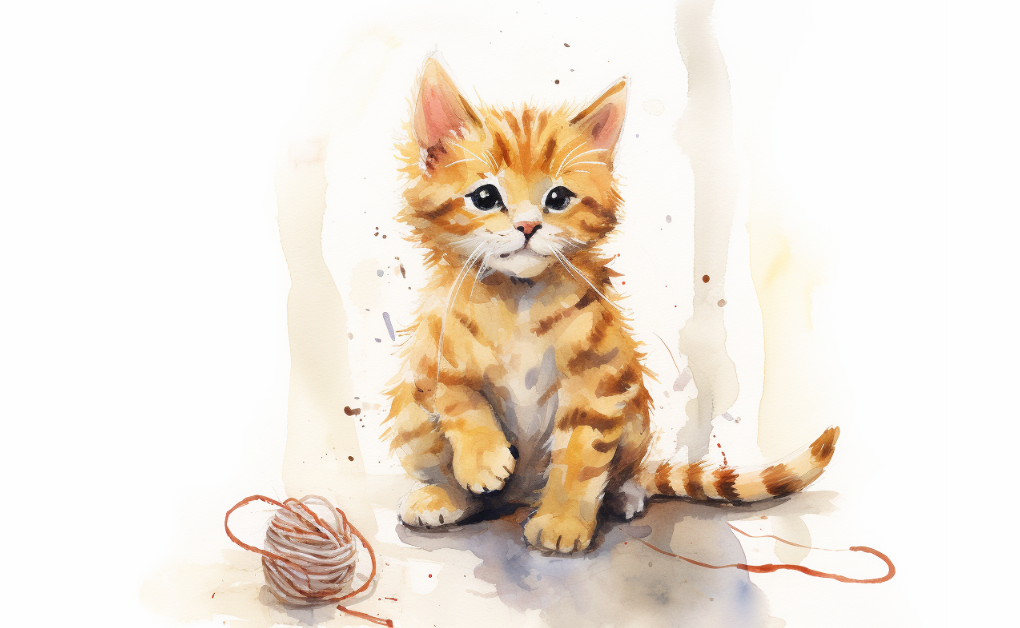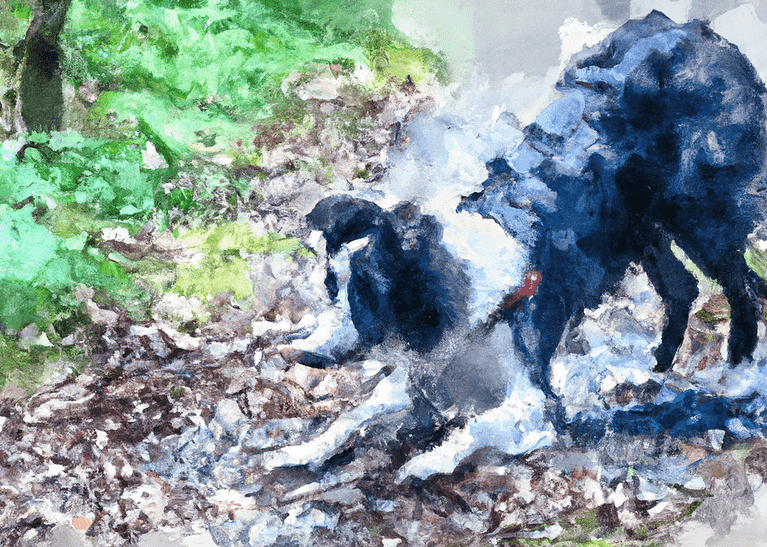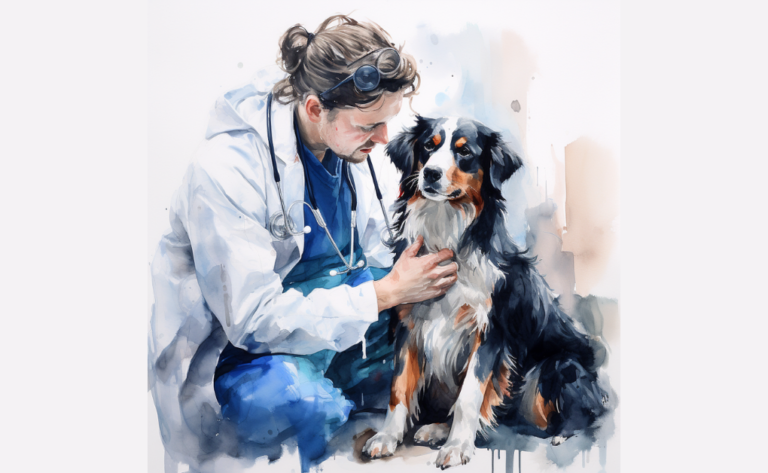What are Intestinal Foreign Bodies in Cats?
What is it?
How is it Treated?
Breed Predispositions
Cats have no specific breed predisposed to intestinal foreign bodies, as it can occur in any cat that ingests non-food items.
Introduction
It all began when Lucy noticed that her normally energetic and playful cat, Whiskers, was lethargic and had a loss of appetite. Worried about her feline companion, Lucy took Whiskers to the veterinarian, hoping it was nothing more than a temporary upset stomach. Much to her dismay, Whiskers was diagnosed with intestinal foreign bodies, a potentially dangerous condition that Lucy had never encountered before.
Intestinal foreign bodies in felines pertain to items or substances ingested and lodged within the gastrointestinal tract. These foreign bodies can impede the standard transit of food and waste through the intestines, leading to potential complications. This usually transpires when the cat unwittingly swallows objects or substances. Commonly seen items contributing to GI obstruction in cats encompass string, toys, hairballs, or other non-digestible materials.
Identifying the incidence of an intestinal foreign body in our small animal companions is crucial for timely and suitable veterinary care. Effective management involves addressing the foreign body’s presence and reinstating normal intestinal function. Prompt intervention is vital to mitigate potential complications such as intestinal blockage or perforation and to safeguard the cat’s digestive health and overall well-being, as highlighted in various retrospective studies.
Types of Intestinal Foreign Bodies in Cats
Intestinal foreign bodies in cats are objects that cats ingest, which can’t pass through their gastrointestinal tract naturally. Depending on the nature of the foreign body and the part of the gastrointestinal tract where it is lodged, it can cause varying levels of discomfort or severe complications. Here are some common types:
Organic Material
This category refers to naturally occurring substances, typically more digestible but can still pose problems if ingested in large amounts or if the cat’s body can’t break them down.
- Hairballs (Trichobezoars): Hairballs occur when cats ingest their hair during grooming. These can often be vomited up, but larger ones can cause obstructions in the stomach or intestines.
- Bones: Cats can generally handle small bones, but larger ones or sharp fragments can cause blockages or even damage the gastrointestinal tract.
- Plants: Some cats may eat grass or other plants. While small amounts usually won’t cause a problem, larger quantities can lead to gastrointestinal upset or even blockages.
Inorganic Material
Inorganic materials are non-digestible, synthetic items that cats might accidentally ingest.
- Toys and Household Items: Small toys, plastic bags, pieces of rubber, and other household items can pose a risk if ingested, leading to potential blockages in the stomach or intestines.
- Stones or Pebbles: Cats might sometimes ingest small stones or pebbles. These are indigestible and can cause blockages in the intestines.
Linear Foreign Bodies
Linear foreign bodies refer to long, thin objects that can become lodged in different parts of the gastrointestinal tract.
- String, Thread, or Yarn: These are particularly dangerous because they can cause a ‘concertina’ effect, leading to severe damage or even rupture of the intestines.
- Dental Floss, Ribbons, Tinsel: Like string or thread, these items pose a serious risk and can cause a ‘linear foreign body’ obstruction if swallowed.
Cat owners must keep potentially dangerous items out of their cats’ reach and provide safe toys for play. If you suspect your cat has ingested a foreign body, seek veterinary attention immediately.
Causes of Intestinal Foreign Bodies in Cats
Intestinal foreign bodies in felines occur when indigestible items are consumed and subsequently become stuck along the gastrointestinal (GI) tract. Cats are well-known for their curious nature, which can sometimes result in the ingestion of non-edible materials that can pose serious health threats. Here are the typical ways cats encounter intestinal obstructions:
Interactive Exploration
Felines often employ their mouths to examine items in their surroundings. During interactive exploration or play, they might accidentally swallow an object if it’s small enough.
This encompasses small playthings, plastic covers, rubber bands, paper clips, or other miniature household objects. While most of these items pass through the GI tract without causing any complications, some may become lodged, particularly if they’re larger or possess irregular shapes..
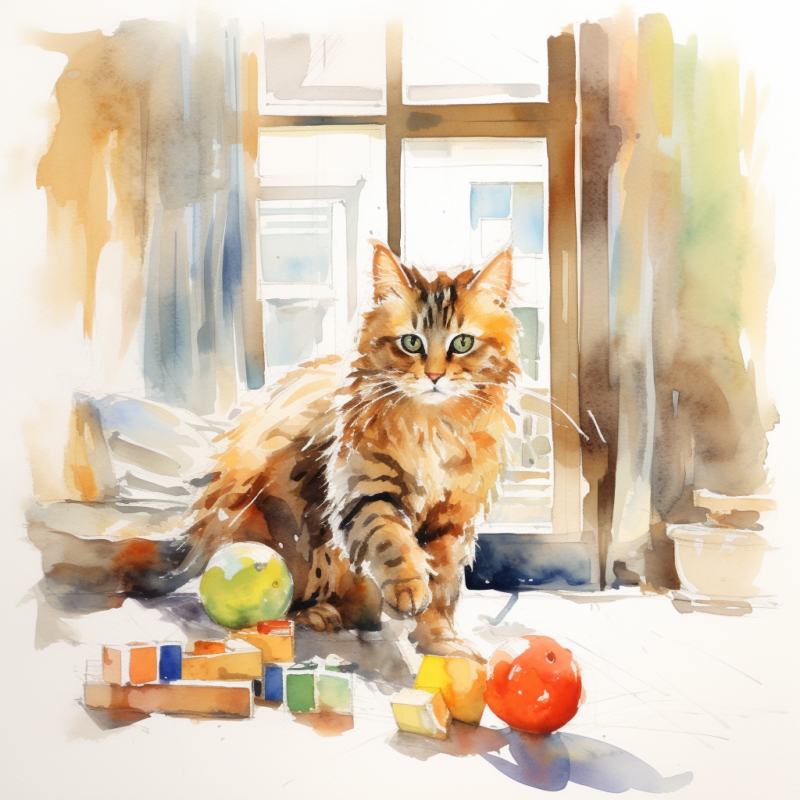
Self-grooming
Cats are fastidious groomers and often ingest loose hairs while cleaning their fur. Most of these hairs journey through the digestive system without any issues. However, in some instances, especially in long-haired breeds, these hairs can amass in the stomach or intestines to form hairballs
Though cats typically expel hairballs by vomiting, sometimes these can grow too large or dense to be eliminated normally, resulting in a blockage along the gastrointestinal tract.
Compulsive Eating Behavior (Pica)
Pica is a behavioral disorder that compels cats to consume non-food items. It’s frequently observed in felines with certain nutritional deficiencies, underlying health conditions, or psychological stress. Cats with pica might ingest various objects, like fabric, plastic, rubber, string, or litter, which can lead to blockages or injuries to the digestive system.
Consumption of Bones or Plant Material
Some felines might consume bones while partaking in meat or fish. While small, softer bones may pass through the gastrointestinal tract without any issue, larger or sharper bones can become stuck or even cause harm to the digestive tract. Similarly, cats occasionally consume grass or other plant material. While smaller quantities usually pass through without a problem, larger amounts can cause obstructions.
Inadvertent Ingestion
Cats might also unintentionally ingest foreign bodies. For instance, while exploring or digging in the sand or soil, a cat might accidentally swallow small stones or dirt that can get lodged in the digestive system.
Regardless of how a foreign body enters the system, if it fails to pass through the GI tract normally, it can result in a variety of health complications, including blockages, perforations, infections, or even a potentially life-threatening condition known as peritonitis, characterized by the spillage of intestinal contents into the abdomen. Notably, cases of linear foreign bodies pose significant risks if the foreign body has perforated the intestinal lining. If you observe signs like vomiting, loss of appetite, lethargy, or changes in bowel movements in your cat, it’s essential to seek veterinary care promptly.
Symptoms of Gastrointestinal Foreign Bodies in Felines
Felines with an intestinal foreign body often exhibit various clinical signs that suggest a health issue. However, it’s crucial to understand that these symptoms can fluctuate depending on the foreign body’s location, type, and duration within the system. Indications that your cat may have ingested a foreign body can include the following:
- Frequent
- Vomiting
- Decreased Appetite
- Exhibited Lethargy or Depression
- Abdominal Pain or Discomfort
- Alterations in Bowel Movements
- Signs of Dehydration
In the presence of these symptoms, it is paramount to seek veterinary assistance immediately. A foreign body obstruction in the intestine is a grave, potentially life-threatening condition requiring swift treatment. It’s always advisable to consult a vet rather than attempting to diagnose or treat the problem independently. Even if your cat is not dealing with an intestinal foreign body, these symptoms indicate a serious problem that demands medical attention. It’s also necessary to rule out other causes that could induce similar symptoms, like a partial or complete intestinal blockage. Advanced stages of such conditions can lead to severe dehydration and electrolyte imbalances, requiring immediate intervention.
How do Veterinarians Diagnose Intestinal Foreign Bodies in Cats?
Suppose a cat exhibits symptoms indicative of a foreign nasal body, such as constant sneezing, nasal discharge, pawing at the face, or difficulties in breathing. In that case, veterinarians will utilize various diagnostic tools to confirm the diagnosis. The following are typical procedures in the diagnostic process:
Veterinary Examination
The vet will commence with an exhaustive physical assessment of the cat, with special attention given to the face and nose. They will observe the cat’s respiration and might palpate (lightly touch and feel) the cat’s face and neck to identify any indications of swelling or discomfort. Sometimes the vet might detect a foreign material lodged at the base of the tongue during this examination.
Analysis of Nasal Discharge
The vet may gather a sample for investigation if the cat presents with a nasal discharge. This can occasionally reveal insights about the cause of the cat’s symptoms. For instance, the presence of blood might suggest a foreign body has resulted in some injury within the nasal passage.
Rhinoscopy Procedure
Rhinoscopy is a process in which the vet employs a specialized tool known as an endoscope to visualize the interior of the cat’s nasal passages. This often enables the vet to visualize a foreign body directly. Sedation or general anesthesia is typically required for this procedure.
Radiographs (X-rays)
Radiographs of the skull can sometimes reveal a foreign body, particularly if it consists of a material visible on X-rays (like metal or certain types of stone). However, not all foreign bodies are detectable on X-rays, and sometimes the foreign body is obscured by the surrounding facial structures.
Computed Tomography (CT) Scan
Occasionally, a CT scan might be required if the foreign body is suspected to be deeply lodged within the nasal passages or invisible on X-rays. This delivers a detailed, 3-dimensional image of the skull and can usually detect a foreign body if one is present.
Abdominal Radiograph and Ultrasound
In some cases, especially for suspected esophageal foreign bodies or those lodged in the small intestine, an abdominal radiograph or ultrasound might be necessary to visualize the degree of obstruction and location of the foreign material. This could include objects such as tinsel, a common culprit for cats, especially during the holiday season.
It’s crucial to understand that, in some instances, a foreign body might only be definitively diagnosed during the vet’s treatment of the cat, such as a rhinoscopy or another procedure to cleanse the nasal passages. In severe cases with a risk of peritonitis due to the spillage of intestinal contents, immediate veterinary care is paramount, which may involve intensive treatments, including IV fluids and potentially resection and anastomosis if there’s dehiscence. If you suspect your cat has a nasal foreign body, seek veterinary attention promptly.
How to Treat Intestinal Foreign Bodies in Cats?
Managing intestinal foreign bodies in felines generally falls into two primary categories: non-surgical and surgical treatment. The decision between these two hinges on various factors, including the nature and position of the foreign body, the cat’s overall health status, and potential risks affiliated with each method.
Non-Surgical Intervention
These methods are typically considered when the foreign body is diminutive, non-toxic, and anticipated to pass naturally through the digestive system. The cat’s condition should also be stable, with no indications of severe pain, obstruction, or perforation.
- Observation and Supportive Care: This involves the vet monitoring the cat’s condition closely, expecting the foreign body to pass naturally. Supportive care, such as intravenous fluids to prevent dehydration and medication to manage nausea or vomiting, might be administered. Regular physical examinations and imaging studies (like X-rays or ultrasounds) may be necessary to monitor the foreign body’s journey through the cat’s digestive tract.
- Endoscopic Removal: If the foreign body is situated in the stomach or the early portion of the small intestine and is of an appropriate size and shape, it can be extracted using an endoscope, a flexible tube equipped with a camera and retrieval tools. The cat will be sedated or anesthetized, and the veterinary surgeon will navigate the endoscope through the mouth and into the stomach to remove the object.
Surgical Management
Surgery is typically considered when the foreign body is causing a complete intestinal blockage, is too large to pass or be removed endoscopically, or has perforated the intestinal wall. It’s also the choice when the cat displays signs of distress, like severe pain or shock.
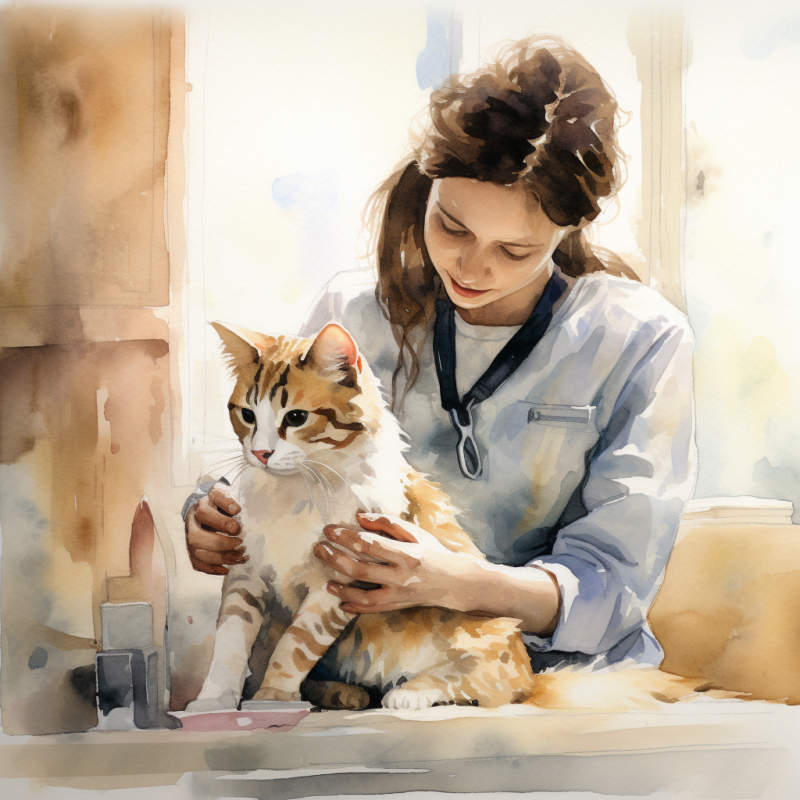
Exploratory Surgery (Laparotomy): This is the most prevalent surgical procedure for removing an intestinal foreign body. In this process, the veterinary surgeon makes an incision in the cat’s abdomen to directly visualize and access the digestive tract.
The foreign body will be surgically removed, and any compromised section of the intestine will be treated, or, if required, an intestinal resection might be performed. This process involves an enterotomy, opening the intestinal loops to remove the object, and may require removing a portion of the intestine if it’s damaged.
Following the procedure, the cat will require recovery time and may need pain medication, antibiotics, and a specific diet. While the stomach and intestines rarely leak after foreign body removal, there’s approximately a 5-15% risk of dehiscence (splitting open of the surgical site).
Both surgical and non-surgical treatments necessitate close monitoring of the cat throughout recovery. The aim is to ensure the foreign body has been entirely removed or passed, the cat is eating and defecating as usual, and there are no indications of complications.
It’s essential to remember that this information serves general educational purposes. Every cat’s situation is unique, and the optimal course of action should be determined in consultation with a vet, often through exploratory surgery, before making any decisions about the specific surgical removal method.
How to Prevent Intestinal Foreign Body Ingestion in Cats
Preventing intestinal foreign bodies in felines primarily involves ensuring your pet does not gain access to objects that they might ingest. Here are a handful of methods to prevent these potentially hazardous occurrences:
- Safe Toys: Offer only toys that are deemed safe for felines. Stay clear of toys with tiny components that can be chewed off and ingested. Exercise caution with toys that involve strings, as felines are captivated by these but can ingest them, leading to a dangerous situation known as a linear foreign body.
- Household Objects: Safeguard small objects that might tempt a feline into swallowing them. This includes hair ties, rubber bands, jewelry, nails, screws, and other objects.
- Secure Trash: Ensure your trash bins are secure, as some felines might be prone to scavenging and could potentially ingest items they discover.
- Monitor Eating Habits: Monitor your feline’s eating habits closely and remain alert to changes. Felines prone to a pica, which compels animals to consume non-edible items, may necessitate additional supervision and behavioral modifications.
- Frequent Vet Check-ups: Regular veterinary visits can help identify potential problems early. If your vet knows your cat’s tendency to eat non-edible items, they can provide strategies to prevent this behavior.
- Food Packaging: Be vigilant with food wrappers, as the odor may attract your feline, prompting them to consume the packaging.
- Plants: Some felines are drawn to indoor and outdoor plants. Ensure your plants are safe for cats and do not have small, detachable parts that could be ingested.
Remember that no prevention strategy is completely infallible, and accidents may occur. In cases where conservative management is ineffective, and you suspect your feline has ingested a foreign object, immediate veterinary care should be sought. Furthermore, prognosis largely depends on whether the foreign body is passing through the intestines, the degree of leakage, if any, and whether a surgical intervention such as opening the stomach has been necessary. Situations with no complications present may be observed closely instead of resorting to immediate medical intervention.
Frequently Asked Questions
Disclaimer: The information provided on this veterinary website is intended for general educational purposes only and should not be considered as a substitute for professional veterinary advice, diagnosis, or treatment. Always consult a licensed veterinarian for any concerns or questions regarding the health and well-being of your pet. This website does not claim to cover every possible situation or provide exhaustive knowledge on the subjects presented. The owners and contributors of this website are not responsible for any harm or loss that may result from the use or misuse of the information provided herein.

